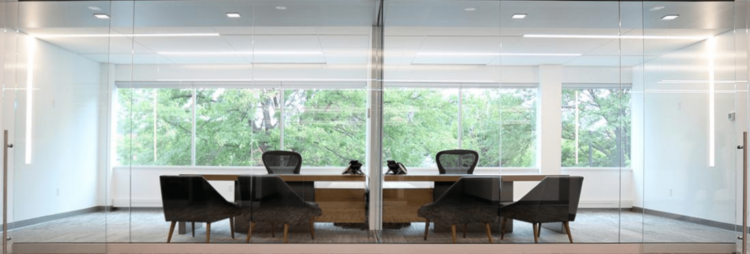
By Tim Spencer, Director of Mechanical Systems
Everyone wants good lighting. From hospitality, to the automotive industry, to healthcare, every industry has a specific wish list for their perfect light. I had the recent privilege of talking to some healthcare professionals from our local hospital about their experience with lighting and what they were looking for. The consensus was clear: brighter, automated, and glare-free. And it just so happens that OLED lighting checks all those boxes.
Bright Lighting
When talking to nurses and technicians, one of the main concerns was that much of the lighting currently available in hospitals — from patient rooms to the perioperative unit — isn’t bright enough. With the delicacy of procedures being performed, it’s imperative that the brightness is increased, without detracting from the patient’s comfort.
Today’s OLED panels are rated for a light output up to 8,400 cd/m2, or 300 lumens. As a reference, this is nearly three times as bright as standard office lighting troffers. Also, with high CRI and R9 values, OLED lighting shows true colors, therefore enabling those in the space to see it as it was intended. With the ability to provide bright lighting that renders colors accurately, healthcare professionals should no longer worry about not having the necessary light to accurately perform their duties.
Smart Lighting
Another desired feature across the board is decreased touchpoints on lighting switches and dials. Particularly timely amidst the global impact of COVID-19, automated lighting that decreases physical touchpoints will lead to decreased transference of pathogens, and an ultimately healthier hospital.
As a member of the solid-state lighting (SSL) family, OLED lighting is easily incorporated into automated control, dimming, and sensor systems. Some examples proposed by healthcare workers were:
- Dimmed lights after a few minutes of inactivity
- Automatic activation of floor lights when a patient’s feet hit the floor
- Automatic activation of bathroom lights upon entry
- Gradual rise of lighting to minimize quick jumps from dim to brightly lit
All this and more is possible with OLED lighting.
Glare-Free Light
Reduced glare was something that hospital employees frequently cited on their lighting wish list. Imagine trying to read a chart or navigate rooms with highly reflective surfaces all day. The toll on your eyes would be irritating at best, and painful and potentially dangerous at worst. Prolonged exposure to glare can lead to eye fatigue and headaches, something that could affect both staff and patients.
With its Lambertian light quality, OLED lighting is a glare-free light source. Along with reduced glare, the diffuse nature of the light eliminates harsh shadows in the room, which means decreased eye strain and fatigue and increased comfort and productivity for the light’s occupants. Bright light that is gentle on your eyes, organic LED is a light source that creates soft and inviting lighting.
OLED light is an ideal candidate for use in healthcare settings. The integration of organic LED into automated systems can create a lighting experience that is personal, healthy, and sustainable. For the places where these values matter most, choose the future of lighting. Choose OLED light.



![[eBook] How OLED is Healthy Light for Our Well-Being](https://www.oledworks.com/wp-content/uploads/2020/08/top-banner-image-blog-page-healthy-ebook-750x254.webp)